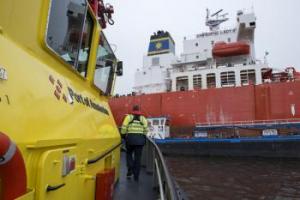Harbour Master
Harbour Masters
Worldwide there are approximately 3,000 merchant ports and the work of the Harbour Master can vary widely from country to country and from port to port even within the same country.


Over 20 years on, Seawork is still the key meeting place for the commercial marine industry and marine civils sector, where businesses connect with their customers to discuss the latest innovations and solutions within their respective industries.
The African Harbour Master committee (AHMC), an African chapter of the International Harbour Master Association (IHMA), will be hosting it’s second seminar for African Harbour Masters. The seminar will be hosted by Transnet National Ports Authority in Cape Town, South Africa from 2 – 4 April 2025 in partnership with the Port Management Association of
Eastern & Southern Africa (PMAESA).
The International Harbour Masters Association (IHMA) and the Port of Rotterdam Authority are pleased to announce the 15th International Harbour Masters Association Congress, to be held from 09–12 June 2026 at Theater Zuidplein in Rotterdam.
The theme of the IHMA Congress 2026 is Connecting Horizons – Building Future Resilient Ports Together, reflecting a shared commitment to collaboration, innovation, and sustainability across the global maritime sector.
Brought to you by OceanWise and Brewzone Africa - Join the first Charting Water Workshop entitled “Harnessing Environmental Data for Hydrography" which is running on the 15th - 16th April 2024 at the Four Points by Sheraton Hotel Lagos, Nigeria.
11th Biennial European Harbour Masters' Committee (EHMC) Seminar
TT Club’s Loss Prevention team is pleased to invite readers to join a webinar discussion on single person incidents including slips, trips and falls. (www.ttclub.com )
Hosted by IHMA sister organisation, The NauticaI Institute, this webinar will demonstrate and discuss essential safety messages for mooring safety addressing new equipment and modern vessels.
The International Harbour Masters Association (IHMA) and the Port of Rotterdam Authority are pleased to announce the 15th International Harbour Masters Association Congress, to be held from 09–12 June 2026 at Theater Zuidplein in Rotterdam.
Naresh Sewnath, Senior Harbour Master at Transnet National Ports Authority (TNPA) in South Africa’s Port of Durban, began his maritime career back in 1988. He started out as a cadet with TNPA (then known as South African Transport Services (SATS).
Join the world’s premier professional body for harbour masters and receive up-to-date information on the industry and access to the members' area of the website.